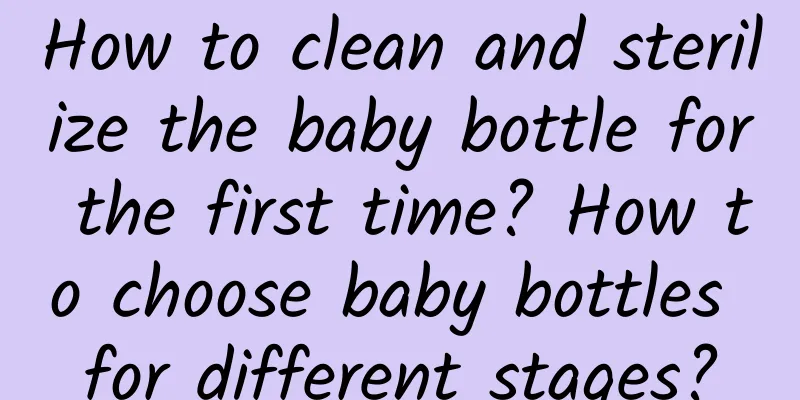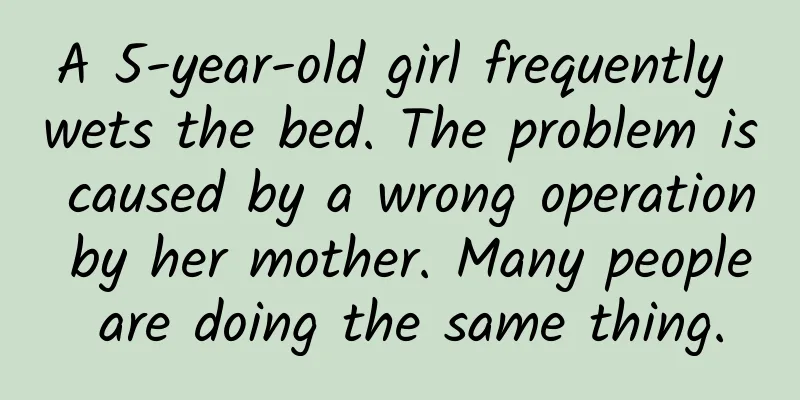How to clean and sterilize the baby bottle for the first time? How to choose baby bottles for different stages?

|
A milk bottle is a container for milk, usually for babies. The milk bottle itself does not include a nipple, but only the bottle body. However, manufacturers of baby milk bottles usually give a nipple with the bottle. So how do you clean and disinfect the milk bottle for the first time? How do you choose milk bottles for babies at different stages? Let's take a look at the introduction of Encyclopedia Knowledge Network below! Contents of this article 1. How to clean and disinfect the baby bottle for the first time 2. How to choose feeding bottles for babies at different stages 3. Do baby bottles have a shelf life? 1How to clean and sterilize baby bottles for the first timeIf it is a glass bottle, boil the water for 5 to 10 minutes, boil the nipple and bottle cap in the boiling water for 3 to 5 minutes, finally pick it up with a bottle clip and put it in a clean and ventilated place to drain. If it is a plastic bottle, boil the bottle, nipple and bottle cap in the pot for 3 to 5 minutes after the water boils, finally pick it up with a bottle clip and drain it naturally. Plastic tableware should not be boiled for a long time, so it is recommended to put it in after the water boils and cook for 3 to 5 minutes, otherwise it will easily deteriorate. Before sterilizing the bottle, you should pay attention to the temperature resistance mark on the bottle. If it is not resistant to high temperatures, it is best not to boil the bottle in boiling water. You can use a steam cooker for sterilization. After the bottle is sterilized, the bottle clamp, bottle, nipple, bottle cap, etc. should be placed in a ventilated, clean place to cool for later use, and covered with gauze or a lid to prevent contamination. 2How to choose baby bottles at different stagesGlass bottles are suitable for newborns. Glass bottles are safe and non-toxic, and the inside of the bottles is easy to clean, which is suitable for newborns who need to be fed frequently. Plastic bottles are suitable for babies over three months old. Plastic bottles are lighter, more durable, and not easily broken by babies. Silicone bottles are safe, lightweight and suitable for babies of any age. Because silicone bottles are soft, babies will feel more comfortable using them. For babies under two months old, you should choose a small-capacity bottle, such as 120ml. Babies over two months old need to choose a bottle of 240ml or more, otherwise the bottle will not be enough as the baby's appetite increases. It is very important to have clear markings on the bottle, especially for younger babies. The scale is a key indicator to measure the amount of milk the baby consumes. If the scale on the bottle is not clear, it will be difficult for parents to grasp the amount of milk to be fed. 3Do milk bottles have a shelf life?Baby bottles have a shelf life. Baby bottles are divided into glass bottles, stainless steel bottles and plastic bottles. Bottles of different materials have different shelf lives. Baby bottles need to be disinfected regularly during use to prevent the breeding of bacteria and harm to the baby's health. In addition, baby bottles generally need to be replaced every 4 to 6 months, and nipples need to be replaced once a month. 1. Has a shelf life Baby bottles have a shelf life, and different baby bottles have different shelf lives. Glass baby bottles have the longest shelf life and can be used for a long time as long as they are cleaned and disinfected regularly. Stainless steel baby bottles have a shelf life of 8 to 10 years, while plastic baby bottles only have a shelf life of 2 to 5 years. 2. Cleaning and disinfection Baby bottles will produce bacteria and other harmful substances during use and need to be cleaned regularly. First, soak the bottle in boiling water for a while, use the high temperature of the boiling water to kill the bacteria in the bottle, and then use a bottle brush to clean the bottle in all directions. 3. Replacement time After using the bottle for a long time, a large number of bacteria will grow and it is not easy to clean. Continued use may have a negative impact on the baby's health, so the bottle needs to be replaced every 4 to 6 months, and the nipple needs to be replaced every 1 month. |
<<: Is it okay to make dumplings with beans without blanching them? How to preserve fresh beans?
>>: What are the origins of Peking duck? How to eat Peking duck?
Recommend
What is the reason for lower abdominal pain and yellow leucorrhea?
For women, if there are abnormal changes in leuco...
Postpartum Hip Pain
Many women experience hip pain after childbirth, ...
What should I do if I have severe internal heat during pregnancy?
Severe inflammation during pregnancy can have a g...
Why does stomach pain occur in late pregnancy?
Pregnancy is certainly a very happy thing, but it...
What to do if you have diarrhea during the fifth month of pregnancy
What should I do if I have diarrhea during my fif...
Can pregnant women eat duck with sauce?
We only know that pregnant women need to pay atte...
Which breast enhancement product is the best?
Fashion, sexiness and elegance are what every wom...
Disadvantages of eating Panax notoginseng powder for a 40-year-old woman
Recently, many people have heard that women over ...
How to stop ovulation bleeding?
Many women bleed during ovulation and mistakenly ...
After recovering from Mycoplasma pneumoniae infection, can I get infected again? How long does it take before I can return to school?
When the baby coughs, the parents tremble! "...
What are the symptoms of pelvic inflammatory disease in pregnant women
Pelvic inflammatory disease occurs due to the inv...
What causes dull abdominal pain after menstruation?
Many women experience dull abdominal pain after m...
The lower abdomen feels like menstruation
If a woman experiences lower abdominal pain durin...
Benefits of taking a ginger bath after childbirth
After giving birth, the mother must strengthen go...
Why did my period come back after it stopped for a few days?
Every woman's physical condition is different...









